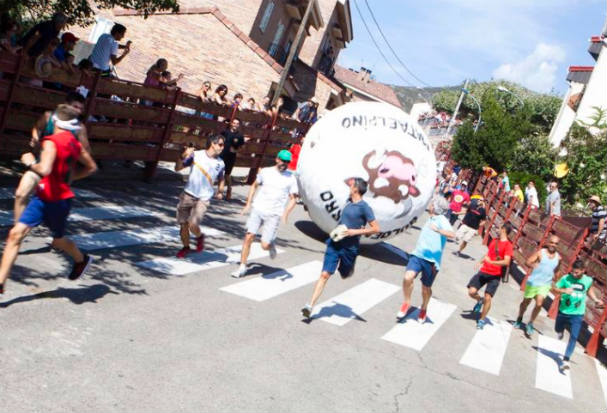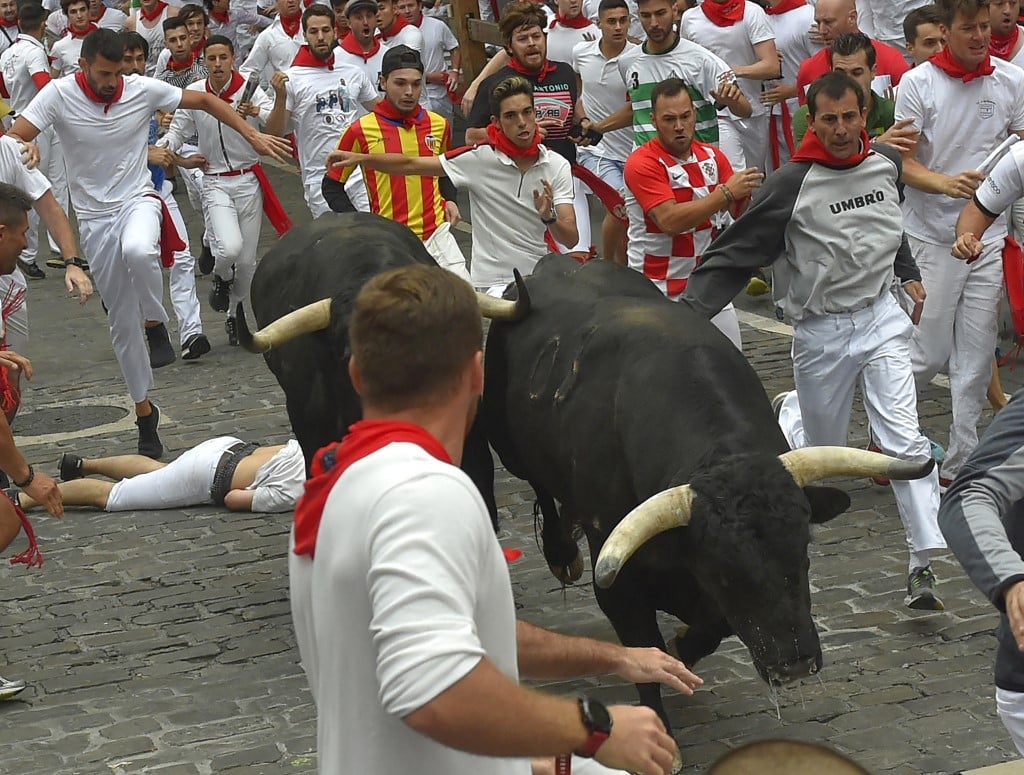Mataelpino, a town of 1,800 inhabitants in the foothills of the Sierra de Guadarrama. has become infamous as the Madrid municipality which introduced a ‘cruelty-free' alternative to bull running that has grown in popularity since being introduced eight years ago.
However, a spate of injuries caused by a giant rolling sphere in recent years led to a move by the town council to replace the heavy ball with a lighter version.
So this year, the 250kg ball was replaced with an inflatable orb weighing in at just 30kg, and yet still someone got hurt: the mayor himself.
As the ball picked up speed rolling down the town’s main street on Sunday, chasing dozens of runners and overlooked by spectators, it bounced off an open door and lurched to the side, knocking a participant to the ground.
That man turned out to be Javier de los Nietos, the mayor of the town and the one responsible for measures designed to reduce casualties during the annual festival.
The mayor reportedly suffered a cracked collarbone.
A twitter user posted a video of the incident along with the comment: “This year the Mayor decided to reduce the weight of the ball from 200 to 30kgs after the accidents of years past. Thanks to this measure, someone broke their collarbone. That someone was the mayor himself. I love Spain.”
Mataelpino. Hogar del boloencierro. Este año el Alcalde decide bajar el peso de la bola de 200 a 30 kilos tras los accidentes de ediciones pasadas. Pese a esta medida, una persona se rompe la clavícula. Esa persona es el propio Alcalde.
TE QUIERO ESPAÑA. pic.twitter.com/ydZFwxtfQ2— Pedro Ample (@pedroample) August 25, 2019
Last year a 29-year-old man suffered severe head trauma after being knocked by the 250kg polystyrene ball against the door of the local bull ring.
In 2017, another participant was left in a coma after being thwacked round the head by the giant rolling ball and another was hospitalized with three broken ribs.
“We are going to review all of our security measures and boost the information given out because people have started coming here from all over the world,” Mataelpino mayor Javier Pérez de los Nietos told El Pais at the time.
“We don't want this to become a tragic event, but rather something fun.”
“People who are used to bulls know that they can't just stand still in front of them because they could be gored. But with the ball some people think that nothing will happen to them, but this is not the case. If they get a direct hit, it can be serious,”
In years past the spheres were huge 250kg polystyrene balls coated with a thick layer of resin and then painted with images of bulls but this year an inflatable version was used.
Participants were also required to wear crash helmets to join the run.



 Please whitelist us to continue reading.
Please whitelist us to continue reading.
Member comments